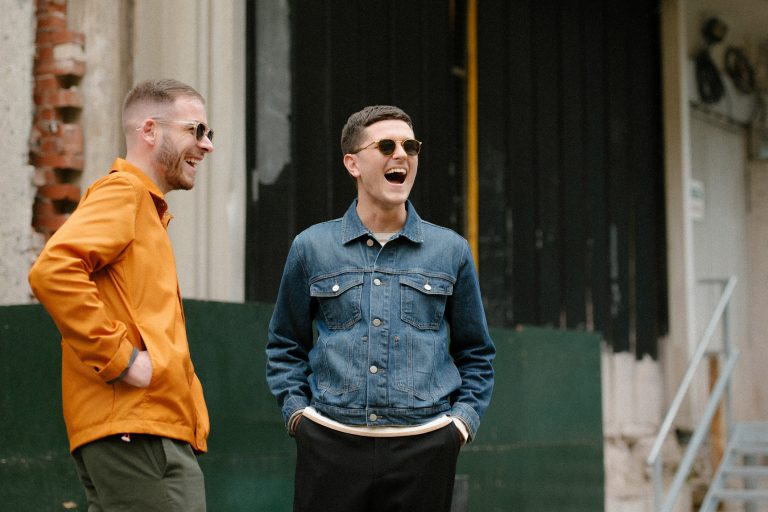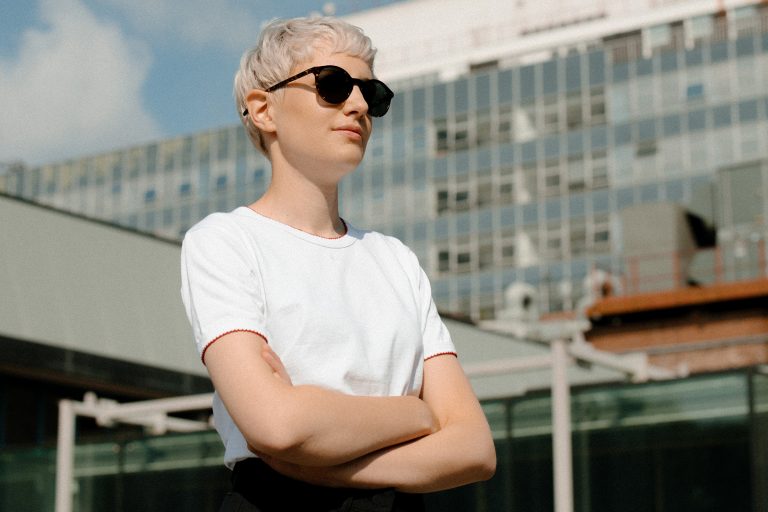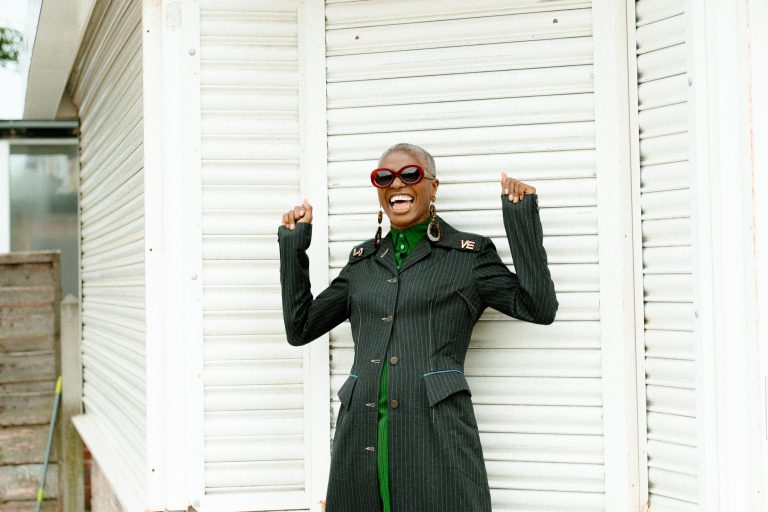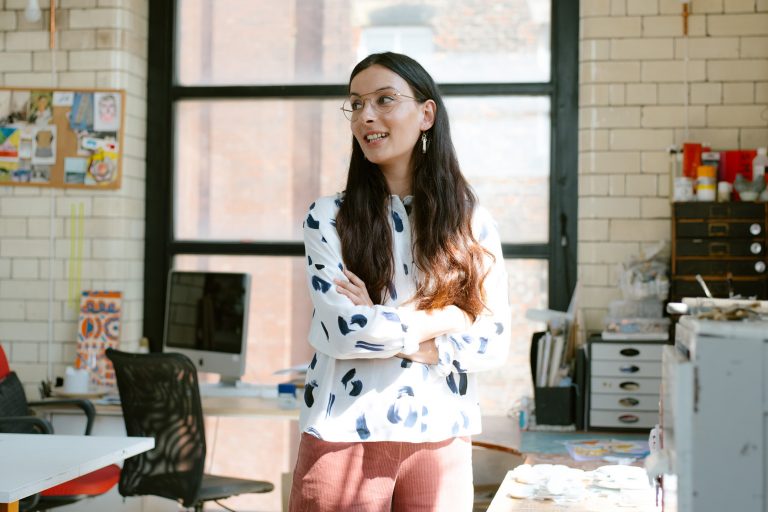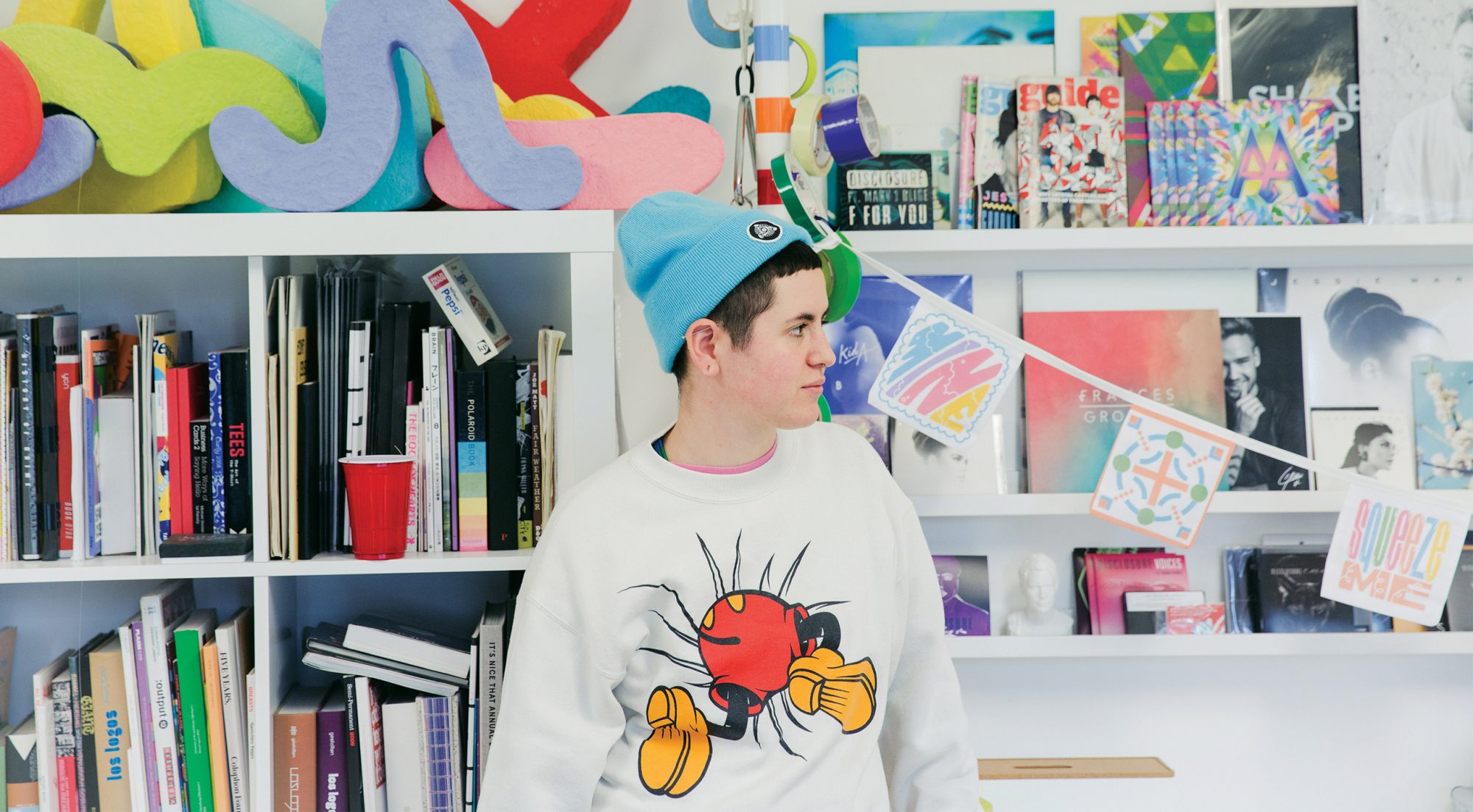
A Dirty Word
Aries Moross always pays interns and has little time for those who don't. Alex Hacillo and Lauren Maccabee visited Studio Moross to discuss their stance
Words by Alex Hacillo
Photography by Lauren Maccabee
Aries Moross’ advice to prospective interns is simple: “Fuck your CV. No one cares about your CV”. As founder of Studio Moross, they runs an operation cranking out a dazzling array of projects for the likes of One Direction and Sam Smith. They don’t care about your qualifications or where you come from, just about what you’ve done and what you can do. “I would never want anyone not to apply here because they thought they didn’t have a good enough mark on their degree … it doesn’t make any difference to me”.
Aries sounds more like a revolutionary than a commercial artist, spitting fire at the established educational institutions, condemning a system that offers little in terms of education, but demands £9,000 a year in return. “There has to be some change, I don’t think people can afford university. We talk about internships being unfair, but look at universities”.


Aries Moross in the infinitely colourful Studio Moross in Stockwell, London
With them are Linus Kraemer and Lewis James. Linus, an early employee of the eight-person studio, joined as an animator in 2013, but seems to do a bit of everything. Lewis is new, and was once an intern at the studio. He learned the basics of the trade in his bedroom, watching tutorials on YouTube at the age of 14. At art college, he sent Aries a link to his work on Instagram and asked if he could come and “help out”. Aries and Linus liked what they saw, and before long he had an internship at the studio, was given projects to work on and paid the London living wage. He’s now up for a full-time job when he gets out of art school.
The studio itself has a relaxed feel. Nestled in a courtyard near Stockwell tube station, the building is oddly reminiscent of an American motel, albeit one decked out with plate glass and packed full of artists. Prints line the wall, and there’s the standard issue table football at one end of the room. You get your tea in a mug with a little cartoon of the eight employees on it.


Linus Kraemer now heads up Studio Moross’ Atlanta office
Still, this cosiness conceals the intensity of the work carried out here. There’s no slacking for interns, no menial rounds of tea or hours of pointless admin. If you’re lucky – or rather, talented enough – to get through the door, you’re subject to the same expectations as every other employee. “It was a bit nerve wracking at first, because it’s Studio Moross” says Lewis, “but after a while it was really cool, it’s really interesting because everyone has their own specialism”.
Being accepted into the studio isn’t the end of the process. After that, you’re given a one-day trial. If you make it through that, you might get a longer term position. Many don’t make it that far: “I’ve had people on trial days who go for a cigarette every 10 minutes” says Aries, “I’m like, ‘what are you doing? This is your one chance to get a job!’” Control your nicotine cravings and get your head down, and you’ll still have to pass the studio’s own, informal tests.


“It’s important to let them settle in first, but I like to put people in difficult situations” Aries explains. “Maybe that’s a bit sadistic, but it’s good to be tested… I’ll give some interns a project and leave them for three days just to test if they have the skills to seek more work. Sometimes they’ll say they’re finished way too soon and I’m like ‘you’re not finished.’ It’s kind of like the SAS, but with internships”.
The process sounds terrifying, the sort of scenario that stalks the graduates’ nightmares and has them waking up in a cold sweat. Still, it’s the reality of commercial work, and these tests are the only way of breaking people out of the warm complacency of student life. Lewis, at least, seems to agree, and claims to have learned more in two weeks at Studio Moross than in two years at university. “It’s not about the skills they teach you,” he says, “it’s being here, the vibe, the mindset, the environment that everyone works in, it’s so fast paced”.

Lewis James’ career has gone from strength to strength since we interviewed him. He recently worked on the visuals for Drake’s ‘Boy Meets World’ tour
“I mean I’ve had interns crying” Aries says, “I have to be straight with them and be like ‘don’t take it personally, you’ve got to be stronger, you’ve got to be less sensitive, you’ve got to be more professional, including not crying.’ I think it’s really important to teach people those lessons early on, otherwise they’re going to struggle when they get a job”.
“When I first started out, if projects didn’t go well it used to really affect me, you know that feeling when you get bad news and you feel sick, it’s like torture. That’s completely gone now, I have a thicker skin. That’s what’s better about a studio, if you have bad news you have a team around you, there’s a camaraderie in failure. When something goes wrong we all come together”.
This is why it would be wrong to malign Studio Moross’ toughness as some sort of post-Fordian nightmare of dog-eat-dog capitalism. At its heart, it’s more like a collective. As an intern, you learn to fail, and how to cope with that failure by being part of a team, and being valued on an equal basis. Once you’ve disassociated the personal from the professional, you get a sort of nurturing environment that is completely unparalleled at any art college, a chance to develop. Studio Moross are justifiably proud of this approach. They don’t see an internship as another sticker for your CV, or a fertile source of cheap labour, but a way to develop new members of the team, to teach people unversed in the brutal, fast-paced world of commercial art how to survive.

A bright future awaits those who work with Aries. Rose Pilkington and Joe May are both now working as freelancers and still collaborate on Studio Moross projects
Guy Field was one of the lucky ones. Armed with a stack of hand-painted business cards, some artistic “ephemera” and some pretty enviable confidence, he strolled into the studio in search of work. The studio, at the time, was still young, relatively cash poor, and had only two staff. “He did the big faux-pas, which is to turn up at the studio unannounced” says Linus (although Aries is keen to point out that he did call ahead). It paid off, and the studio offered him a day’s work a week, with expenses. Since then, he’s graduated from hawking artful business cards, and has become an integral member of the studio. Aries thinks that this is, in part, due to their ability to get the best out of people. “He brings so much to the studio, I think I brought out something in him, things he didn’t know were his strengths”.
Linus, Aries and Lewis all have their own gripes with the way conventional art education is run, and Linus is particularly unrestrained in denouncing its failures. “At college, it was basically a group of men on a big power trip” he says. “The motive wasn’t entirely for the students’ benefit, they were enjoying it”. Aries, for their part, underwent the somewhat retro ordeal of seeing teachers rip up work in front of students. By all accounts, the system has changed since their time, and no longer resembles a gritty Victorian novel. Still, its failings seem fairly entrenched. Lewis claims that the student-to-staff ratio at his college is around 30 to 1, “worse than secondary school”. In that kind of environment, feedback is inevitably shallow. “This teacher was giving us one-word feedback” he says. “They see everyone as numbers, it goes all the way up to how the university is run for money”.
Not glowing praise for a course demanding nine thousand a year. But what other way is there? How else can you meet your contemporaries and begin to develop creatively? Staying in your bedroom forever isn’t an option, and Aries is adamant that they want to “smash this idea” that you can work in isolation and become some sort of artistic megastar.


Insisting that something has to change, Aries argues that demanding unpayable tuition fees is both unfair and basically inefficient. This is where some of the radicalism begins to emerge. Not quite the radicalism of red banners and barricades, but a desire to overturn old institutions and build something better in their place. “I think there is a cheaper alternative to arts education. You don’t need to pay thousands for this post-industrial revolution system, we can do it more organically”.
The solution, they think, lies in extending their approach to interns to wider society, organising private businesses into courses, giving education a practical grounding, and providing students with the sort of support they could expect working at a studio. “What we teach people is of massive value compared to art school. There are other things, like being with your peers, not having the pressure of business and all that scary shit, but if you could find something that was a bit of both, that would be really valuable”.
They’d be prepared to do it, too, and picks up on a number of mentoring schemes they run, including a mock studio set up for students in Glasgow. “I love teaching, and it’s exciting. Everyone in the studio likes having someone there to nurture and help”.
Their idealism is admirable and contagious, and there’s no doubt that the current system encumbers students with an unacceptable amount of debt without giving much back. Nonetheless, the vision isn’t complete. Aries has the will, and certainly the commitment, to change, but the obstacles are huge. Why would private businesses want to give their time and effort to teaching students? Wouldn’t they want compensation for lost time? Who would pay for the facilities?
Linus appears far more melancholic about the whole situation, pointing out that Aries’ scheme would basically be the wholesale privatisation of arts education, with all its attendant problems. To him, the exercise is more of a thought experiment, showing just how ridiculous nine grand is. He argues that university is the answer, but “it has to be massively subsidised, so you value it but aren’t affecting your future”.

This is the crux of the problem. Once you open art colleges and universities up to market forces, lifting fees to nine thousand per year, you turn art education into a personal investment opportunity rather than an environment purely for personal creative growth. Aside from saddling students with debt, it also forces a much more cash-driven, cold-headed cost-benefit analysis in which the poor facilities and teaching offered no longer seem to be worthwhile. What’s more, any meaningful choice becomes illusory without organised structures offering a different model. Art school remains important as a space to think.
For now, aspiring artists are in a catch-22. Art school still seems to be the best place to start your career, to meet people, to develop. Aries, by their own account, felt misunderstood at university but found a way to learn by talking to others. “I found a tutor who took on us misfits, and we made our own little studio. We supported each other. I benefited from that experience more than any other at uni”. The problem is the cost. Aries claims that they would not have gone had they been forced to pay at the current rate.
For now, internships like those at Studio Moross seem to provide the best solution. Not degrading, unpaid labour, but a system where you earn money and get the best education, all on the job, in a relationship that’s beneficial for both parties. “Intern is seen as a dirty word, where you’re stuck making cups of tea” says Aries. “I want to change that”.

This feature was first published in our fourth print issue in September 2016, as such, some of the information may be outdated. The Studio Moross team has changed a little but the philosophy remains the same. Keep tabs on their stunning work over on Instagram and be sure to follow Aries as well. You can see what author Alex Hacillo is up to via Twitter and by now you’re surely following photographer Lauren Maccabee. If not, get it together and head to her Insta.




